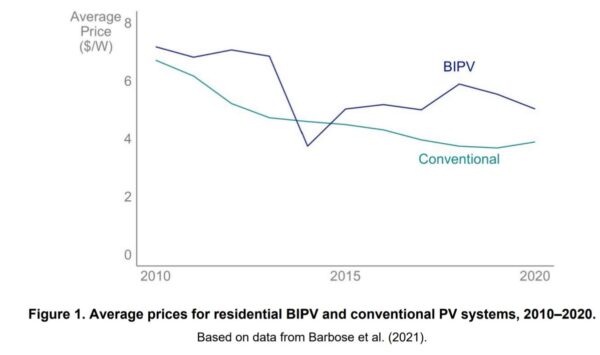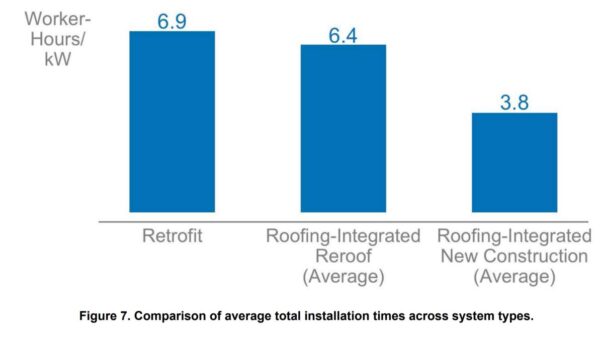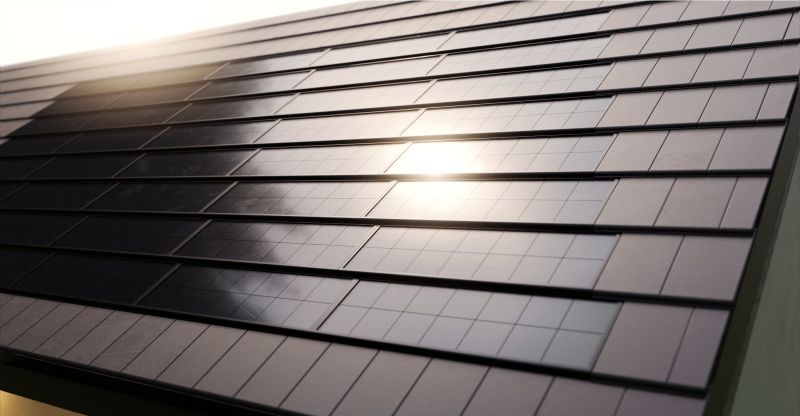The National Renewable Energy Laboratory (NREL) conducted a time-motion study on solar contractors installing roofing integrated PV (RIPV) on residential solar projects at several sites in the U.S. state of California. The researchers published their findings in a publication titled “Observations and Lessons Learned From Installing Residential Roofing Integrated Photovoltaics.”
The study primarily highlighted that new construction RIPV installs very quickly. However, the time required to retrofit RIPV is still comparable to that of standard solar installations. The installation times are still higher for retrofit RIPV, at least in part, due to the application of new techniques and the continued evolution of supply chains.
This analysis was prompted in part by the fact that building integrated PV (BIPV) have not kept up with forecast price declines. This is despite the fact that investing in BIPV during the retrofitting of roofing, siding or windows can reduce or eliminate the need for separate solar components. Even when these hardware and labour costs are factored in, the expense of BIPV installations still tends to surpass that of conventional installations.

To further understand why costs remained higher than anticipated, NREL interviewed industry experts and performed time-motion studies at various RIPV residential installation sites.
The research compared the time taken for RIPV installations with that of standard residential solar installations. In the U.S., 32% of the installation costs are attributed to racking and mounting, 32% to electrical work, 20% to meals, breaks, cleanup, and delays, and 16% to travel and installation preparation. Overall, the study found that standard installations required 6.9 worker-hours per kW installed.

NREL conducted its analysis by monitoring two distinct RIPV reroof sites, with each site using a different product. They also observed RIPV installations on new homes at nineteen additional construction sites in the vicinity.
The three field visits were conducted in central California:
- Reroof site in San Jose, California; observed over five days in June 2021
- Nineteen sites in a new construction community in Sacramento, California; observed over five days in August 2021
- Reroof site in San Jose, California; observed over five days in June 2022.
NREL divided the RIPV installation process into four main steps. The process begins with pre-installation tasks including staging, unloading and preparing the roof. This is followed by the placement of fire-resistant underlayment, a task typically performed by roofing material companies, not solar installers. The third step involves the installation of flashings and solar modules, and the final step is the installation of wiring and monitoring.
The most time-consuming reroof step was the installation of flashings and solar modules, which took approximately 2.4 worker-hours per kW and accounted for 60% of the process time of an average installation. On average, the total installation process took about 6.4 worker-hours per kW at reroofing sites, and 3.5 worker-hours per kW at new construction sites.

NREL researchers found that the normalization of retrofit RIPV solar projects in the installation process could speed up installations. The team noted several delays caused by different suppliers delivering materials to project sites, exacerbated by limited product availability and contractors not maintaining sufficient stock. These factors led to unnecessary time wastage for the onsite installation team.
The two reroof projects highlighted that various RIPV systems require differing amounts of time for various tasks, each presenting a unique learning curve. While the NREL report didn’t specify which products were used, it appeared that Reroof A might be a more complex Tesla Solar Roof, whereas Reroof B could be a standard solar shingle product.

The installation complexity of the Tesla Solar Roof has been a known challenge, particularly due to the number of custom pieces required for assembly.
NREL also had the opportunity to observe new solar installations on pristine rooftops. These projects, on average, required a total of 13.2 worker-hours to install an average of 3.4 kWdc of solar, amounting to roughly 3.8 worker-hours per kW installed. This time frame was notably 45% less than the 6.9 worker-hours per kW necessary for a typical retrofit installation.
Inconveniently located vents and oddly shaped roofs often present frustrating challenges for solar designers.
Despite having a clean slate with plywood roofs free of shingles, crews working on new construction suggested that installation efficiency could be improved if architects and solar product manufacturers collaborated more. According to their feedback, aligning roofing materials’ dimensions more closely with those of solar products could increase solar module coverage on the roof, and accelerate solar solar product development by reducing the need for on-site customization.
Looking at specific characteristics, NREL found that projects installed on a single roofing plane were significantly less time-consuming. As expected, electrical work proved to be considerably quicker and easier on homes with bare frames already designed to accommodate specific solar hardware, as compared to retrofit projects involving fully constructed structures.
Author: JOHN FITZGERALD WEAVER
This content is protected by copyright and may not be reused. If you want to cooperate with us and would like to reuse some of our content, please contact: editors@pv-magazine.com.








By submitting this form you agree to pv magazine using your data for the purposes of publishing your comment.
Your personal data will only be disclosed or otherwise transmitted to third parties for the purposes of spam filtering or if this is necessary for technical maintenance of the website. Any other transfer to third parties will not take place unless this is justified on the basis of applicable data protection regulations or if pv magazine is legally obliged to do so.
You may revoke this consent at any time with effect for the future, in which case your personal data will be deleted immediately. Otherwise, your data will be deleted if pv magazine has processed your request or the purpose of data storage is fulfilled.
Further information on data privacy can be found in our Data Protection Policy.